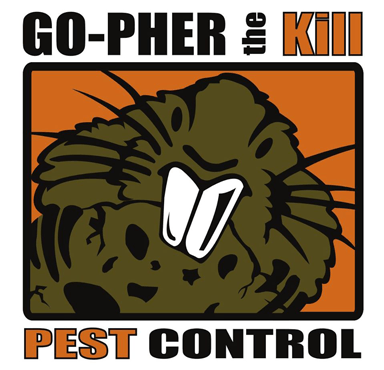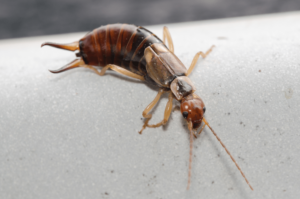Pocket Gophers are among the most camouflaged pest species across North America. No, they aren’t wearing khakis, it’s their incorrect portrayal in movies and television as cute, cuddly animals. These medium-sized rodents can range anywhere between 5-14 inches long and are distinguished by their unusually small eyes and ears specializing in life underground. The proportionally massive claws on their front feet enable them to tunnel through the ground and create the elaborate subterranean networks for which they are widely known. Although these critters are quite wonderous to scientists and animal lovers, they can be quite an aggravating pest for homeowners.
One of the most common techniques that people tend to default to when considering the removal from their property is relocation. While the aforementioned portrayal is largely behind the sentiment, they are among the many mammal species that cannot be successfully relocated. Why? These species, five of which are unique to California, are highly resistant to control techniques that involve such removal tactics. The first challenge is trapping the animals. Though this is necessary for many different types of control methods, relocation, or otherwise, it’s incredibly challenging to pull off when gophers are involved. Traps work best in small areas and must have highly accurate positioning, equipped with an extremely sensitive trigger. If the design of the trapping technique is not perfected down to the most minute detail, you risk them thwarting your efforts by either bypassing the trap altogether, destroying it or shifting it out of an effective position. Further, they can learn rather quickly to avoid control methods that involve easily identifiable accessories like traps and baits. If they circumvent your efforts once, it is unlikely that they will be fooled by it again.
Secondly, there is a phenomenon in animals known as “site fidelity.” This is when an animal navigates its way back home after being taken from their original home due to conflict with humans or natural reasons. One study demonstrated high levels of site fidelity in Baird’s pocket gopher. What does this mean for you? It may be emotionally more comfortable for you to choose relocation over lethal techniques for this particular pest; it may not be the best option in the long run. The colony may be cleared of your yard for a few days or weeks, but they will eventually find their way back to their specially designed home.
Lastly, capture and release programs have their drawbacks for common pest species, such as gophers. While it does keep the animal alive and present a highly appealing, nonlethal control method for affected homeowners, it also presents some serious downfalls. Relocated animals have to compete for resources with species already living in the area. Many will often get sick or starve.
They are among the many different rodents known for being carriers of the following diseases:
- Rat-Bite fever. A bacterial infection transmitted by bites, scratches, or contact with the animals’ urine or other bodily fluids.
- Tularemia. Aside from spreading via direct contact, it can also be airborne due to “aerosolized” (somehow sprayed or otherwise projected into the air) bodily fluids of the rodent or transmitted through bites from ticks that were previously on the animal.
- Hantavirus. A viral infection that humans can become infected with upon ingesting particles of the gophers’ waste.
These represent only a handful of the diseases that rodents can spread. What does this have to do with relocation? When gophers are relocated rather than exterminated, there is a higher chance of them dispersing the above diseases to new populations of animals and humans in the area in which they are released. Choosing to relocate is quite the gamble concerning public and environmental health. For these reasons, it is critical to apply a multi-faceted approach to their control. This is why the experts at Go-Pher the Kill Pest Control offer three main pillars to our mitigation services:
- Trapping
- Baiting
- Fumigation
Although employing traps for gopher control is challenging, our years of experience have allowed us to perfect our technique, making our services more effective than anyone else in Riverside and San Bernardino Counties. Our first service spans over 30 days and will be customized to your yard’s size and the number troubling you. If they circumvent the trapping phase, we will release a carbon monoxide solution into the tunnels to eliminate the issue. Baiting is also a reliable option that can be used. Don’t allow your garden to suffer anymore due to excessive digging and tunneling by pocket gophers. Call for an estimate today and learn what we can do to save your yard from one of North America’s most common rodent pests.



